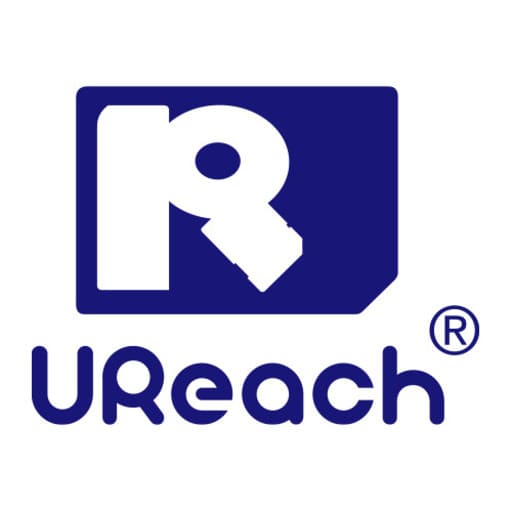
Digital information has become an indispensable part of modern society; however, data security issues are also becoming increasingly serious. When it comes to hard drives that handle sensitive data, it is important to ensure that the data does not fall into the wrong hands. Data destruction and hard drive wiping are two common methods for permanently erasing data from a hard disk. This article will compare the advantages and disadvantages of these two methods to help readers understand which methods to use to ensure data security in different situations.
Index
Data Destruction
Data destruction is a traditional and straightforward method that aims to destroy the structure of the hard drive so that it can no longer be read. There are several common ways to perform this approach:
Magnetic destruction: By touching the surface of the hard disk with a strong magnet, the magnetic coating of the stored data is destroyed, making the data unrecoverable.
Flash cutting: For hard disks that use flash memory to store data, special cutting equipment can be used to completely cut off the flash memory chip to prevent data from being read.
Manual sabotage: This is one of the easiest but also riskiest methods to directly use tools such as hammers to damage the hard drive.
Pros & Cons
Pros:
- 100% destruction of data on hard drives, ensuring it cannot be restored.
- No special technology or equipment is required, just simple tools to execute.
Cons:
- Waste of hard disk resources: This method is very wasteful for hard drives that are still functional.
- Environmental issues: E-waste from data destruction is a burden on the environment.

Further Discussion:
- Security: Data destruction can indeed destroy the data on the hard disk, but in some highly sensitive cases, it may still be possible to recover some parts of the data through special technology. This is a concern for organizations involved in national security or important trade secrets.
Hard Drive Wiping

A hard disk wiper is a professional hardware device designed to erase data effectively and safely from a hard drive. These machines typically support multiple erasure standards, such as the NIST 800-88 Purge & Clear, U.S. Department of Defense’s DoD 5220.22-M standard, to ensure that data is completely erased.
Pros & Cons
Pros:
- Safe and efficient: Hard disk wipers use professional erasure algorithms to ensure that data is completely erased, rather than just destroying the structure of the hard drive.
- Economical: For drives that are still functional, using a wiper can save hard drive resources and allow them to be reused for other purposes.
- Environmentally friendly: Wipers produce less e-waste and are more environmentally friendly than destruction.
Cons:
- Investment required: Hard disk wipers usually require a certain purchase cost and may be a burden for small businesses or individual users.
- Resource limitations: Some older drives may not be compatible with the new erasure criteria, which may prevent some data from being completely erased.
Further Discussion of Hard Drive Wiping:
Data Security Level: Hard disk wipers usually provide a variety of erasure standards, such as different degrees of multiple overwrites or random overwrites. Using a higher level of erasure criteria can further increase the security of your data. In general, most situations are sufficiently secure using lower-level erasure criteria.
Policies and Regulations: Some organizations may need to follow specific policies and regulations for handling data on hard drives. These policies may require the use of specific erasure standards or specific hard drive handling to ensure data security and compliance with legal requirements.
Special Hard Drive Types: Some special hard drive types, such as SSDs or RAIDs, may require specific processing to ensure that data is completely wiped out. These drives work differently when storing and deleting data than traditional drives, so special attention is required.
Proof of Data Destruction: In some cases, official proof of data destruction is required. Professional hard drive wipers usually provide the appropriate report or proof of destruction, which can be used for the organization’s internal records or external audits.
Resource Recovery and Environmental Protection: E-waste generated by the destruction of hard drives has a negative impact on the environment, especially when disposed of in large quantities. The use of hard disk wiping machines can reduce the amount of electronic waste generated, making it more environmentally friendly.
Comparison Table of Data Destruction and Hard Drive Wiping
| Attribute | Data Destruction | Hard Drive Wiping |
|---|---|---|
| Method | Directly damages the structure of the hard drive | Uses international authentication erase methods to erase data on the hard drive |
| Security | Difficult to recover, but there may be some risks | Safer and follows international standards for erasure to ensure complete erasure |
| Reusing | Can no longer be used | Can be repurposed for other purposes |
| Eco-Friendly | More e-waste is generated | Less e-waste is generated |
| Application | The hard drive is damaged or unusable | The hard drive is still working and needs to be permanently erased |
| Recycle | The hard drive cannot be recycled | Reclaimable hard disk resources |
| Efficiency | Slow, needs to be done one by one | Fast, can erase a large number of hard drives at high speed |
| Data Erasure | 100% destruction of data | 100% clear data |
Best Practices
When choosing between data destruction or hard drive wiping, the choice should be based on actual needs and circumstances.
Recommended Best Practices:
- If the hard drive is damaged, faulty, or unusable, destruction is the best option to ensure that the data does not fall into the wrong hands.
- If the hard disk is still working but needs to have its data permanently erased, use a hard disk wiper and choose an erasure method that meets international standards to ensure that the data is completely erased. For highly sensitive data, consider seeking professional data security services that adhere to higher levels of security standards and technology.
Conclusion
Data destruction and hard disk wiping are two methods for data security, each with its own applicable situation. If the hard drive is damaged or not functioning properly, destruction is the most direct and effective method.
However, for working hard drives, a hard disk wiper is a better choice, ensuring that data is completely erased while saving hard disk resources and being more environmentally friendly. Regardless of the method used, securing sensitive data is always a top priority.
Check out our full series of Eraser: Eraser Full series
Check out our M.2 NVMe series of Eraser: M.2 NVMe series
UReach-Malaysia official website: https://ureach.com.my/
E-mail: info@ureach.com.my





